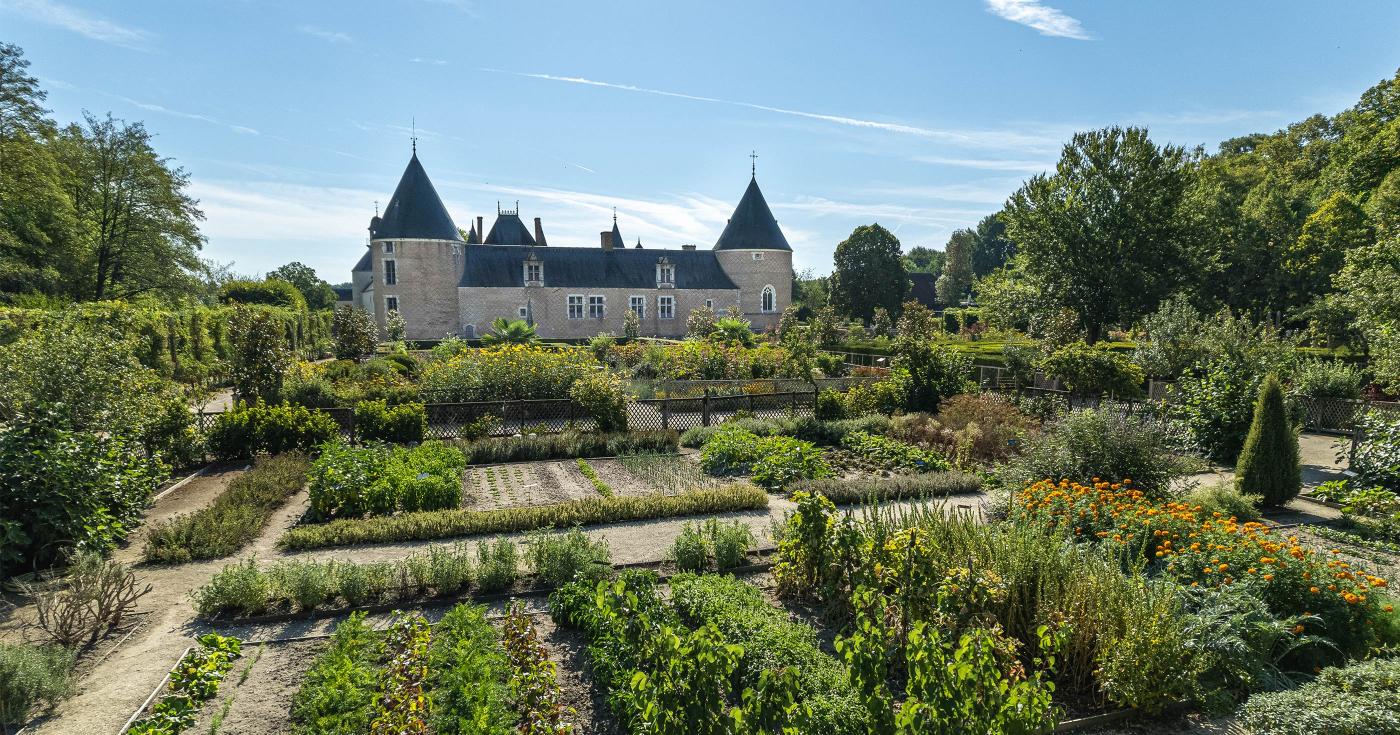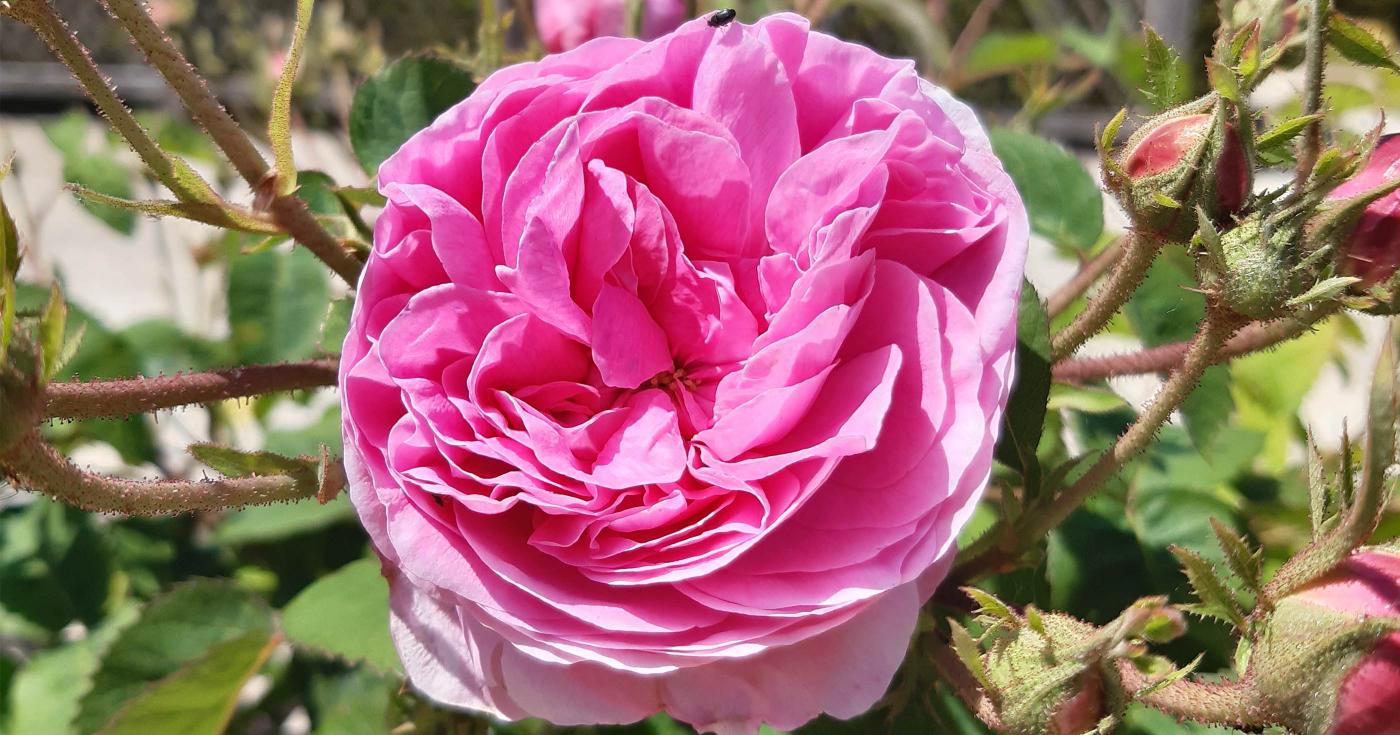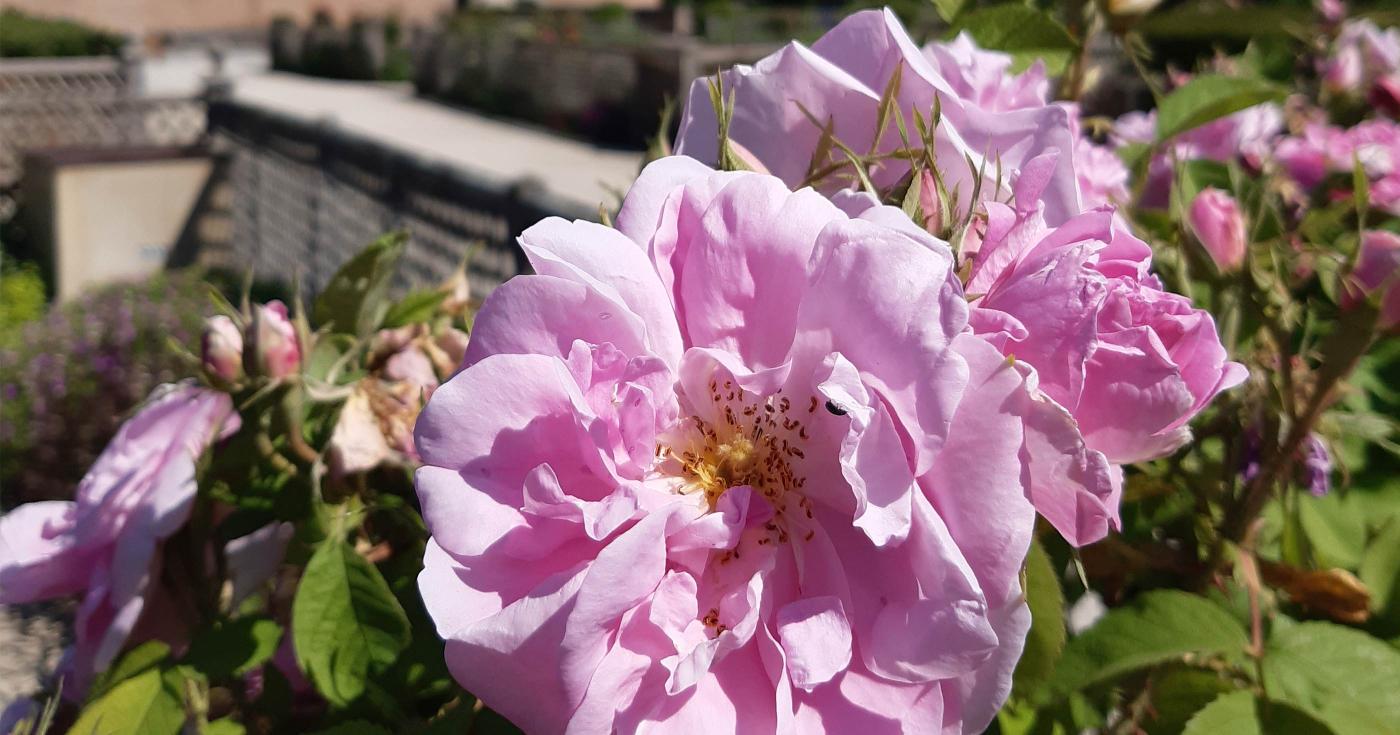The gardens
Château de Chamerolles and its gardens is one of nineteen sites of excellence on the Route de la Rose in Le Loiret.
The Renaissance Gardens
The labyrinth, planted with yew trees and its central beech, uses a motif used since Ancient Greek times in frescoes and mosaics. The first labyrinth is found in the legend of King Minos and Ariadne's thread. In the Middle Ages, it was a source of spiritual inspiration. In the 18th century, it was synonymous with entertainment, becoming a favourable place for love games.
The more playful “pré-haut”("high meadow") square was a very popular location for conversing, listening to music or even playing. The “préau” courtyard is not a wooden structure under which we can shelter, as we do nowadays. The meadow from the time of the Renaissance must be understood in terms of height, that is, kinds of brick benches in which grass grows, acting as seats, providing a real living room in a green garden .
To delight the eyes, the embroidery parterre, divided into triangles and squares, features different geometric shapes centred on an obelisk. Yew, boxwood and rose trees are pruned regularly to create a real embroidery of plants.
The square, dedicated to rare plants, allowed the bringing together of botanical curiosities introduced in France after their discovery on new continents, including plants from the Americas or the Mediterranean basin. Today, visitors can find palm trees, magnolias, sunflowers and other plants, all bordered by rows of lavender.
Finally, two squares of kitchen garden, bordered by fruit trees have also been restored. Located at the bottom of the Renaissance gardens, their purpose is suggested by their name; they are used purely for the château kitchen. Courgettes, asparagus, strawberries, salads, aromatic and medicinal herbs, cabbages and many other plants grow as the seasons turn.
Spotlight on our roses
May Rose or Centifolia
This rose, with its hundred leaves and exceptional fragrance, is the painter's rose, the rose par excellence. Originally from the Caucasus and Iran, and known since ancient times, it was hybridised in various ways by Dutch breeders trying to improve it in the 16th century. It is now associated with the Grasse Region, where it has been cultivated since the mid-17th century. It is harvested from mid-May to mid-June. Its production has decreased significantly since the beginning of the 20th century, but some producers continue to grow it thanks to contracts with major perfume houses such as Chanel or Dior.
Our Centifolia is found in our "Préau” Square.
Damask rose
The most fragrant of all the roses, the damask, probably existed as early as Roman times. It was one of the first roses to be cultivated for its cut flowers, in the early 18th century.
It is cultivated in Turkey, Pakistan and Morocco and in the Rose Valley in Bulgaria. It is harvested early in the morning, to prevent the essential oil from evaporating in the heat. This pink gold is traded at around €8,000 per kg.




